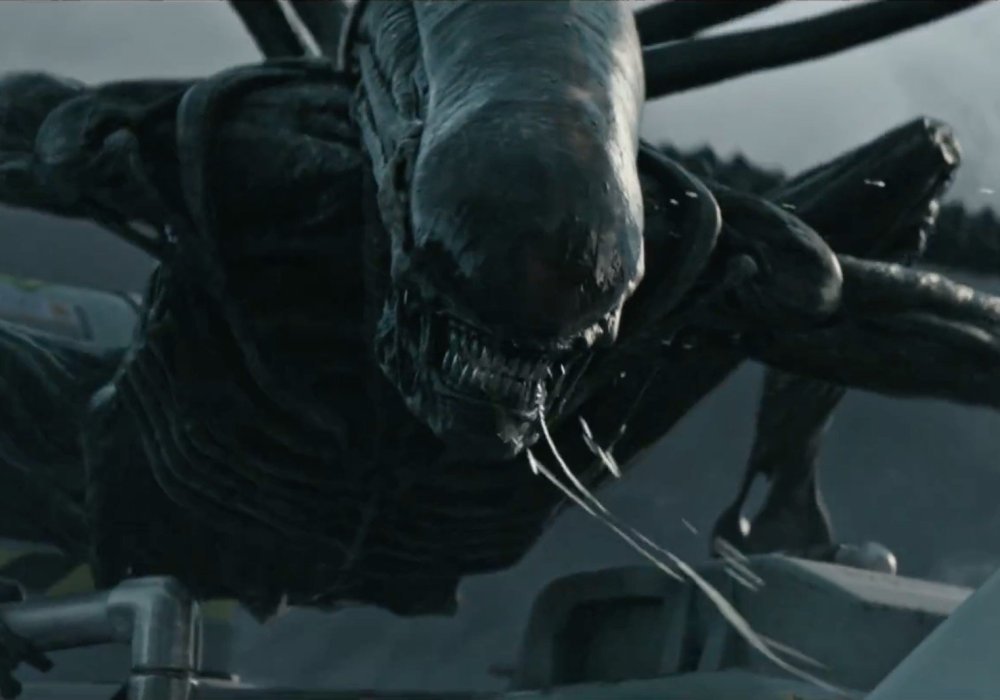
Alien: Covenant is Fun, as Long as You Don’t Think Too Hard About it
For almost four decades, the Alien franchise has kept audiences intrigued through its combination of complex science-fiction ideas and intense action and horror sequences. But as later sequels put more emphasis on action and suspense, rather then high concepts and storytelling, a noticeable drop in quality began. 2012’s Prometheus was supposed to refocus the franchise back in the direction that made the first 2 films great, but the bad writing and trope-ladened plot combined to create one of the most intellectually inept blockbusters in recent memory. With so many problems to overcome, that Alien: Covenant manages to feel fresh and enjoyable despite its many shortcomings is almost an accomplishment, however sad that may be.
Picking up where Prometheus left off, Covenant pulls double duty as both a prequel to the original Alien, as well as a continuation of the story Prometheus began. As such, the film tries to reflect this by calling upon the more scientific and inquisitive approach of its predecessor, while also delivering upon the expected gore and violence the series made its claim upon. It’s in these areas where the film tends to exceed expectations, presenting an interesting mystery that helps bring audiences in before the body count starts adding up. It’s clear that director Ridley Scott spent a great deal of time thinking of how the Xenomorphs came to be, and how to construct a story that both centers around this and simultaneously continues the themes and ideas introduced in Prometheus.
This combining of identities shines brightest when Covenant turns into a full-on creature feature. The classic Xenomorph returns, portrayed as a merciless killing machine, with a number of scenes during the third act showcasing the agility and ferocity that made this classic movie monster so scary the first time around. Brought to life through a combination of practical and digital effects, the Xenomorph is a more agile being when compared to previous incarnations, giving Covenant a more action-thriller tone, as opposed to the typical horror tone in previous films.
Covenant‘s main new addition to the franchise is the Neomorph, a new creature meant to highlight the evolutionary chain that led to the Xenomorphs inception. The primary antagonist for most of the film, the neomorph manages to be terrifying thanks in part to it’s more feral nature, lashing out uncontrollably at our protagonists, with numerous violent results. Several scenes that explore how the Neomorph thinks and acts help add depth to the creature, and grounds both it and the threat it poses in the film’s world in a tangible way. This doesn’t, however, forgive the blatantly identical birthing sequence and design comparisons to the Xenomorph that can’t help but come off a bit lazy.
On the non-alien side of things, Covenant is one of the best looking and sounding blockbusters in recent memory. Much like in Prometheus, director Ridley Scott’s eye for cinematography hasn’t been lost, portraying even gorey and disturbing images with a strange semblance of beauty. The ship and equipment the crew of the Covenant Inhabbit feel appropriately dirty and lived in, and their designs fall close to that of the ships in the original film. Soundwise, composer Jed Kurzel’s score strikes a more subdued and Insidious tone, helping keep early scenes of exploring the mysterious planet tense. The inclusion of the Prometheus theme may periodically come in and clash with the rest of the scores sound, but it all comes together to form an interesting enhancement to (and extension of) the film as a whole.
Sadly, the attention given to these facets of the film were not paid to the characters, Covenant’s biggest problem. Much like Prometheus before it, we are presented with supposedly handpicked, experts in their field scientists, all of whom make idiotic decisions that get people Killed. These aren’t simple mistakes either, as several characters are more then willing to stick their faces in completely foreign and potentially hostile Objects, leading to deaths and events that are more frustrating then they are tragic. While the actors do their best with the material they are given, the characters are often written as stereotypes of the franchise (short haired femme fatal, captain in over his head, comedic relief, grunt cannon fodder, etc.). This is nothing to say of the plot device (directly begun because of the poorly written characters) which brings our crew to the film’s main setting, and the numerous gaps in logic that hold back what could have been a spectacular return to form for the franchise.
The individual parts for Alien: Covenant could be combined to make something epic and grandiose, and it’s easy to see how it could have come together. But through the framework of forgettable/badly written characters, and a number of poorly thought out plot points, Covenant tends to be only a good sci-fi thriller, when it could have been a great Alien film. This distinction may not bother some, but when a film such as this comes so short of joining the likes of Alien and Aliens, it’s hard not to come down a little harder on it. Otherwise, Alien: Covenant goes all in when it’s shooting for the stars, even if it doesn’t quite break orbit.
Arbitrary Numerical Rating: 8 Screams You Don’t Hear in Space out of 10
